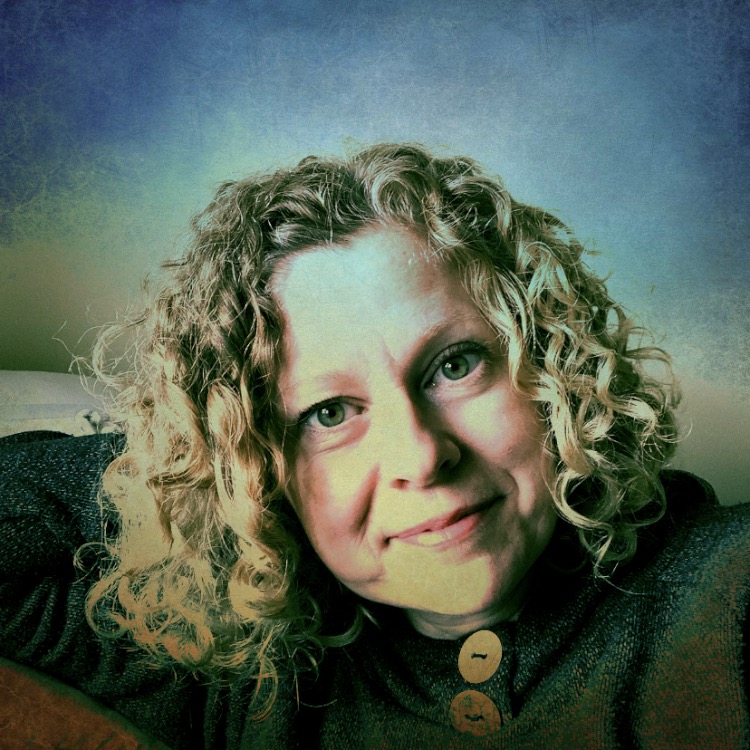Bears, Bats, and Belonging
- Christina Grant

- Jul 1, 2021
- 3 min read

Yesterday at dusk, I had just stepped outside when I heard snapping twigs. Not the scurrying scuffle of a squirrel beneath the underbrush, but the sound of a larger inhabitant.
I turned in the direction of the bending branches and spotted a bear’s black behind. He lumbered away, not exactly terrified, but deliberately increasing the amount of space between us. I didn’t have time to be scared before realizing I had startled him. After all, this was his home too. I sent out a little prayer of appreciation to this being, an assurance that we could live here in mutual harmony.
Then this afternoon, upon opening the bunkie door, my attention was drawn to a shadow shifting in the corner of the door jamb. It was a bat: tiny, squinty-eyed, and scared. If I closed the door, she would be crushed, so I propped it open and backed away. She crawled up and out, hung under the roof before scrabbling to some other unknown location. I apologized aloud for disrupting her rest in a space she thought was safe. I was grateful for her presence, noting that I hadn’t seen or heard bats in a long time.
One of the joys of having a cottage is the constant reminder that you are not the only living thing who calls this place home.
Why, then, has it taken me so long to acknowledge another truth? These past few years, I am finally waking up to reality of what Canada Day means for so many of my fellow human beings who reside on the land traditionally called Turtle Island. I am embarrassed it took so long.
Over thirty years ago, I learned about Indigenous people of Canada in school. The subject was framed as the relic of a former society, like Ancient Romans, a people who once existed. Never did I consider the community living today. How insidiously colonialist narrative works itself into every aspect of our governance, education, and daily lives!
I am a settler and a treaty person. And although I feel like belong on this land, this land does not belong to me. I acknowledge that I live part time on the Territory of the Anishinabek Nation: The People of the Three Fires known as Ojibway, Odawa, and Pottawatomie Nations. I am also profoundly grateful to the Chippewas of Saugeen, and the Chippewas of Nawash, known collectively as the Saugeen Ojibway Nation, as the traditional keepers of this land.
In essence, this place of rock and water and wind belongs to no one. If anything, what I feel when I sit along its shoreline, looking out over the every-changing sky and water, is a sense of belonging. A feeling that I belong to this land.
What a powerful perspective. One of mutual respect and stewardship. One of proactivity.
For I too, am a keeper of this land, these waters. I have a sacred responsibility to tread lightly; this is the land of the bears, the air of the bats, the water of the salmon.
The land of the Saugeen Ojibway Nation.
On October 13, 1854, the Chippewas of Saugeen and the Chippewas
of Nawash Unceded First Nation signed a treaty with the Crown. In
this deceitful agreement, the Nations lost approximately 500,000 acres
in the Bruce Peninsula and their rights to hunt and fish on the land.
A contested claim over Treaty 72 is nearing an end. The SON want to reclaim the waterways, the road allowances, the government-owned parklands, and a few hundred acres of County forest in Georgian Bluffs known as the Mountain Lake forest property of the Saugeen (Bruce) Peninsula. The government must give back the land to the Saugeen Ojibway Nation so that we can learn by their example of stewardship. We must work towards repairing both the damage done to the people of Turtle Island and also to the land itself. If we want to continue to thrive on this planet, we need to adopt a relationship, not one based on hierarchical power structures, but on interdependency between all living things.


Comments